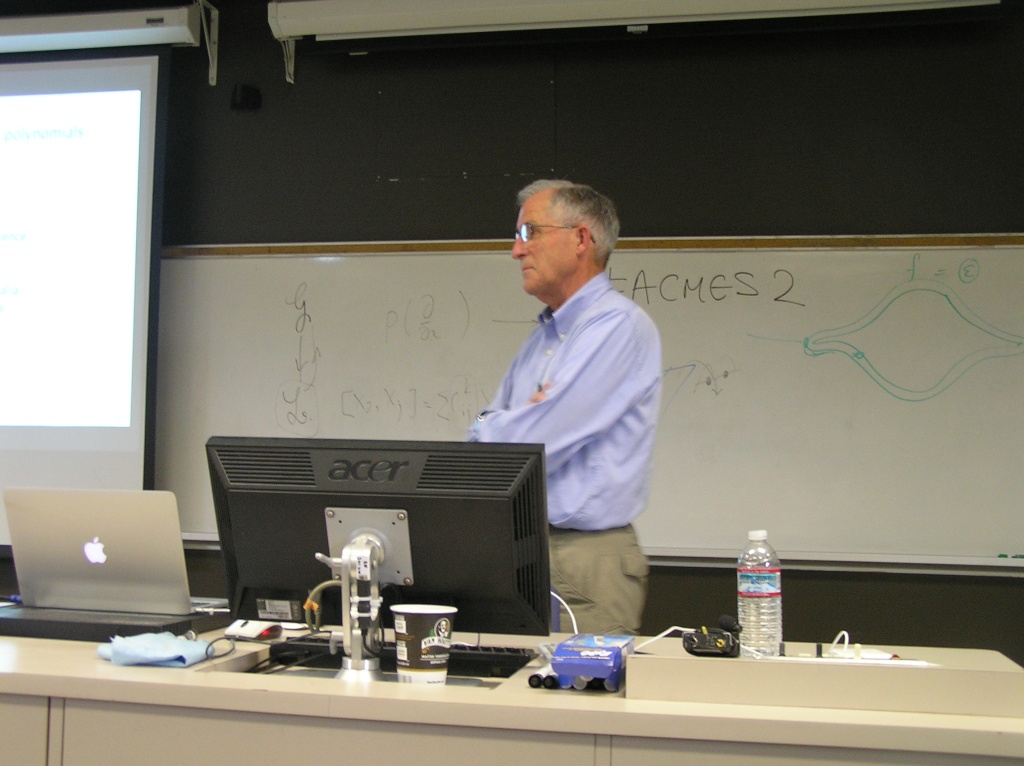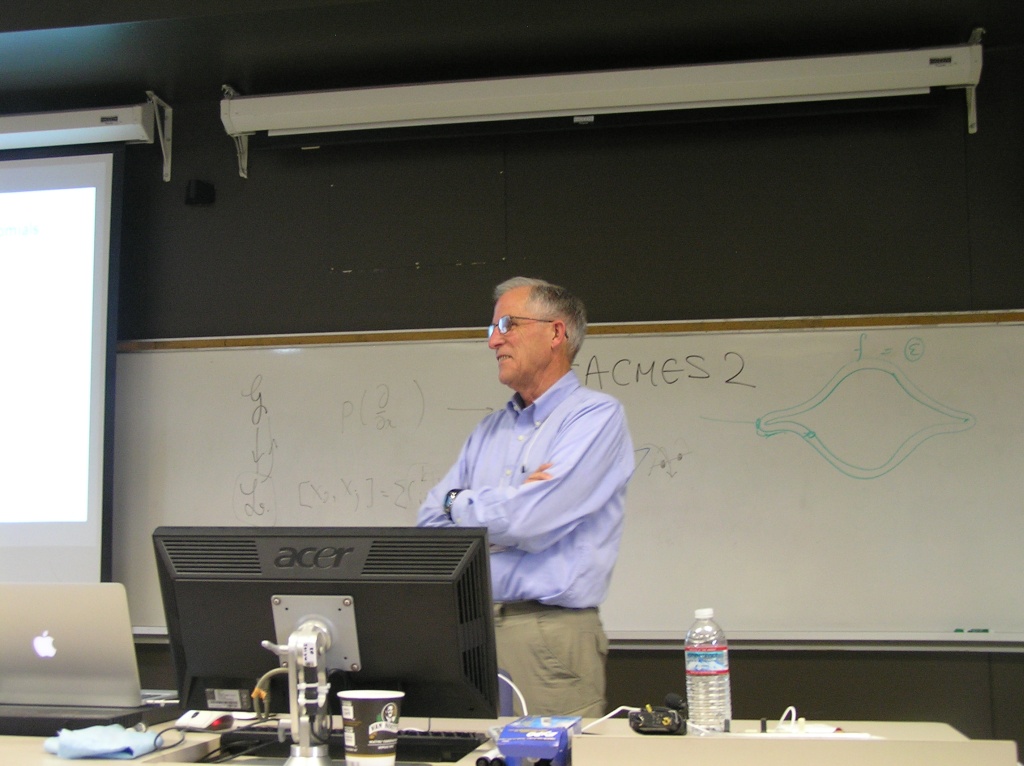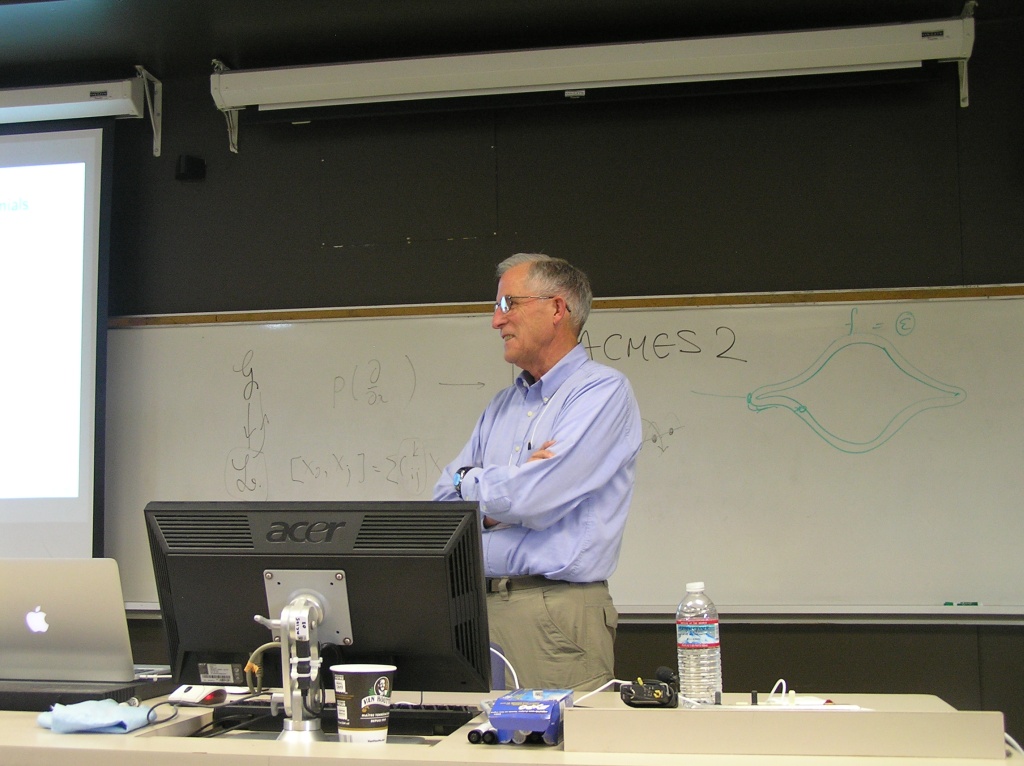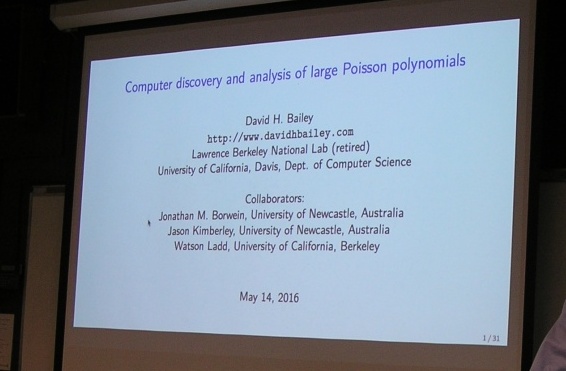David H. Bailey , Lawrence Berkeley National Lab and University of California, Davis
Computer discovery of large Poisson polynomials
In two earlier studies of lattice sums arising from the Poisson equation of mathematical physics, we established that the lattice sum phi_2(x,y) = 1/pi*log A, where A is an algebraic number. We were also able to compute the explicit minimal polynomials associated with A for a few specific rational arguments x and y. Based on these results, Jason Kimberley conjectured a number-theoretic formula for the degree of A in the case x = y = 1/s for some integer s. These earlier studies were hampered by the enormous cost and complexity of the requisite computations. In this study, we address the Poisson polynomial problem with significantly more capable computational tools: (a) a new thread-safe arbitrary precision package; (b) a new three-level multipair PSLQ integer relation scheme; and (c) a parallel implementation on a 16-core system. As a result of this improved capability, we have confirmed that Kimberley's formula holds for all integers s up to 50 (except for s = 41, 43, 47, 49, which are still too costly to test). As far as we are aware, these computations, which employed up to 51,000-digit precision, producing polynomials with degrees up to 324 and integer coefficients up to 10^145, constitute the largest successful integer relation computations performed to date. The resulting polynomials have some interesting features, such as the fact that when s is even, the polynomial is palindromic (i.e., coefficient a_k = a_{d-k}), where d is the degree). Further, by examination of these polynomials, we have found connections to a sequence of polynomials defined in a 2010 paper by Savin and Quarfoot.







